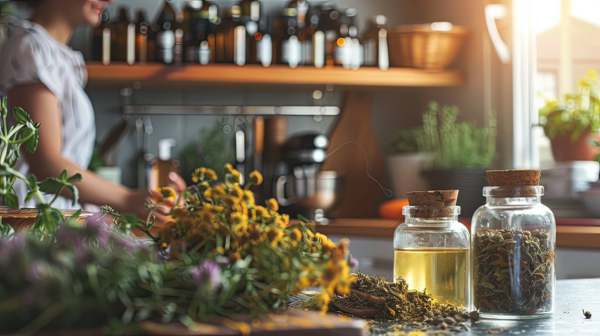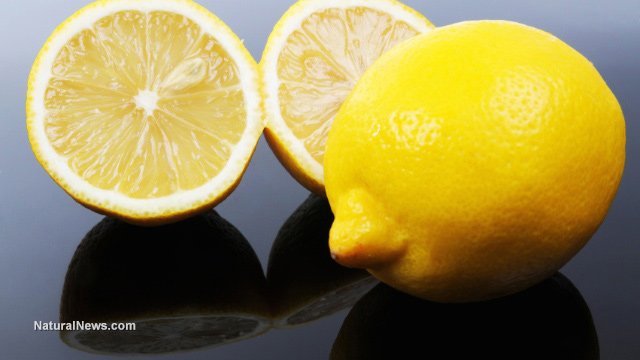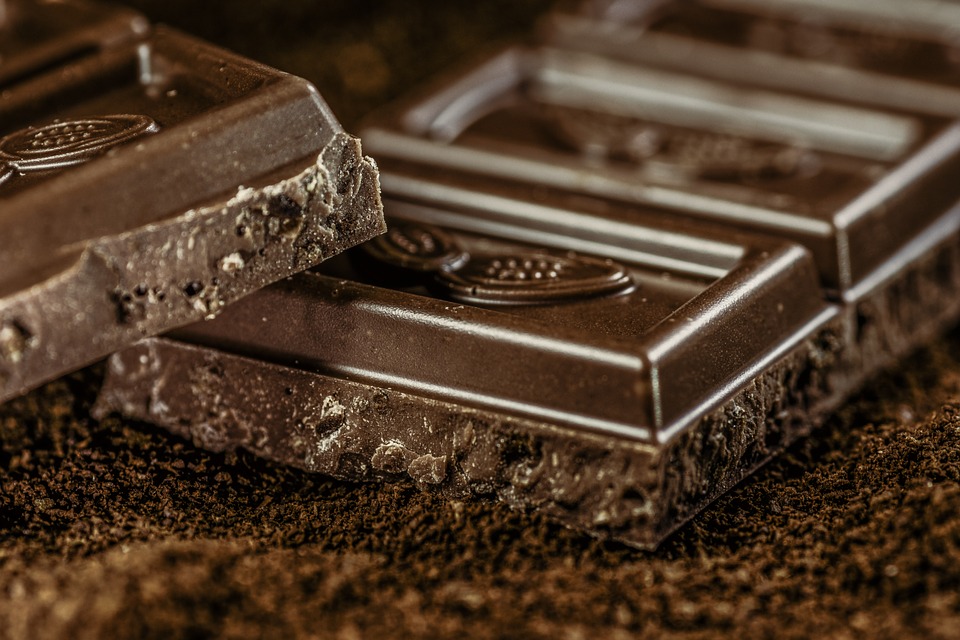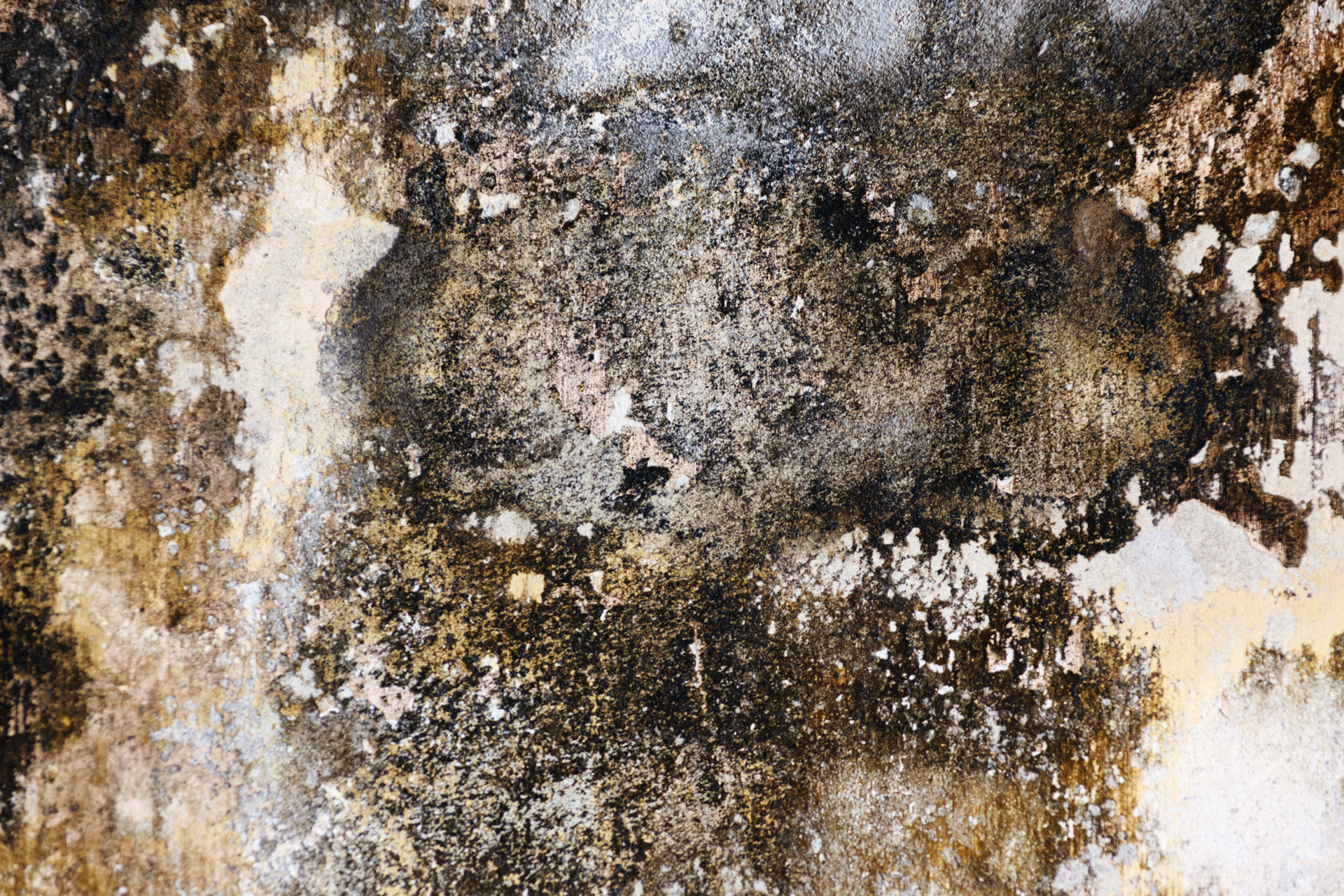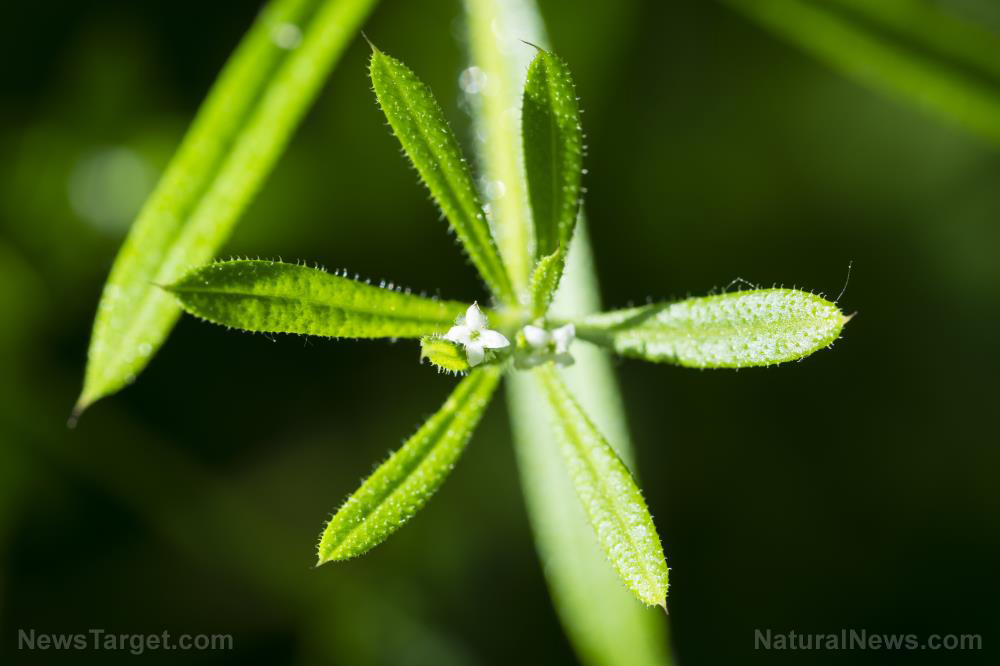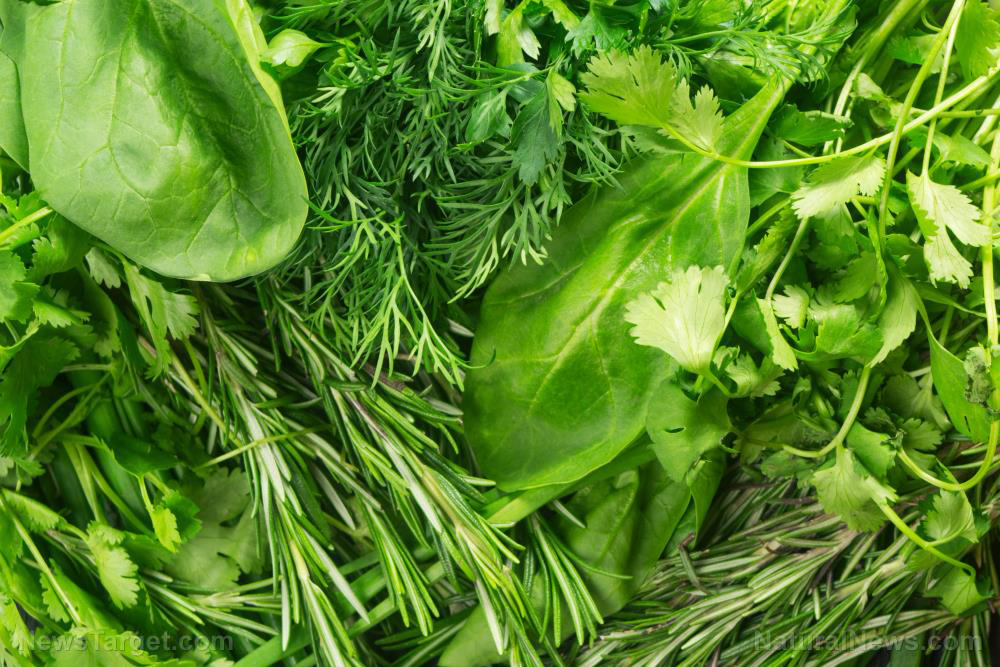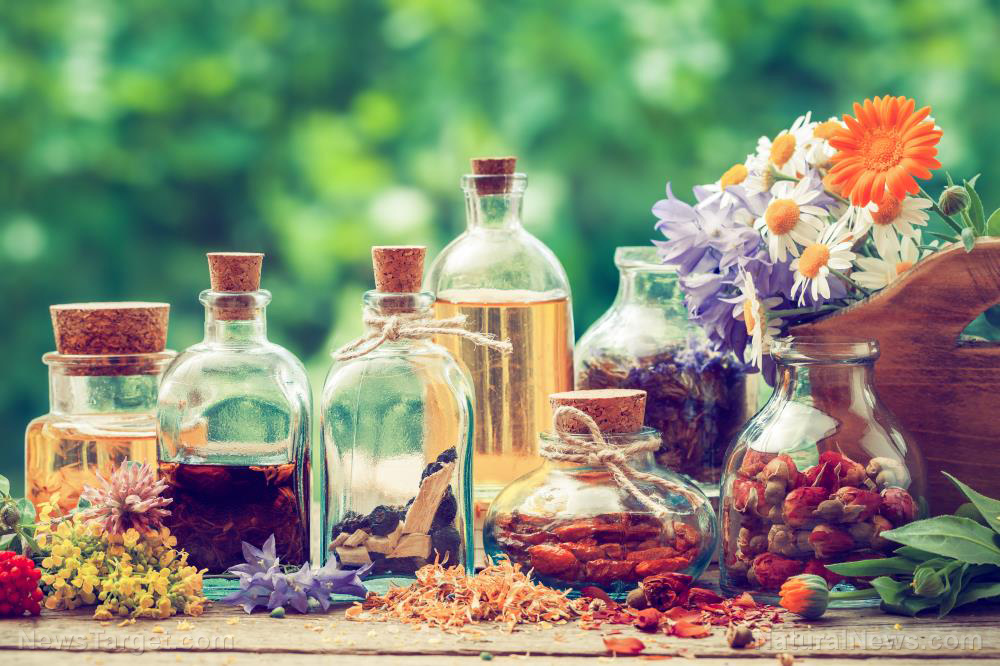Boswellia serrata: An ancient resin with boundless medicinal properties
06/03/2025 / By Ava Grace
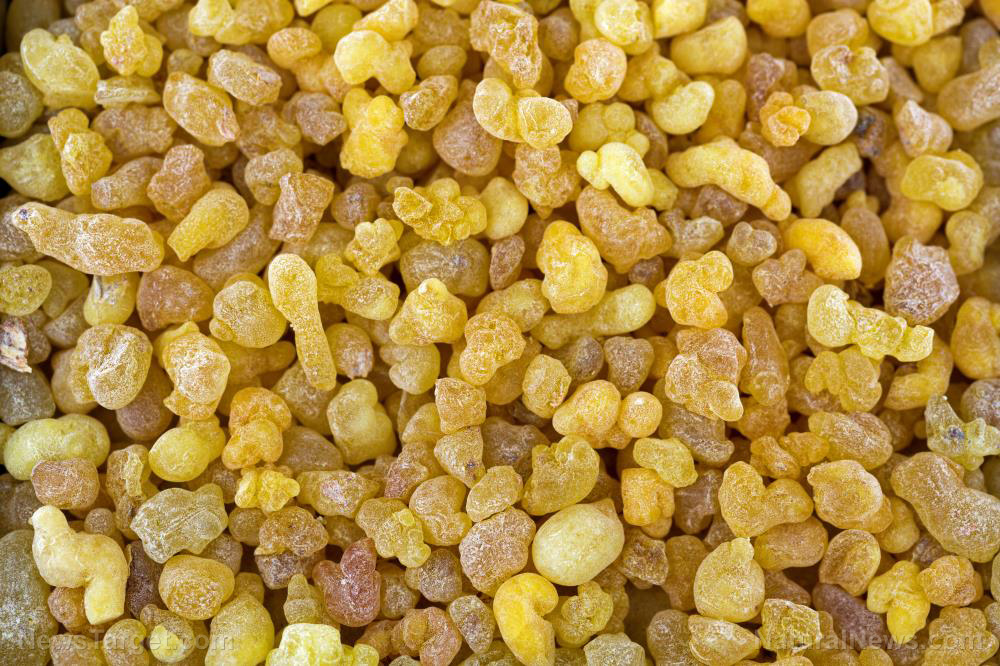
- Boswellia serrata, or Indian frankincense, has been used for over 3,000 years in Ayurvedic and Unani Medicine to treat inflammation, pain, arthritis, respiratory issues and digestive disorders. It was highly valued by ancient civilizations, such as the Greeks and Romans, and traded along the Silk Road.
- The resin of Boswellia serrata contains boswellic acids, particularly AKBA and KBA, which have potent anti-inflammatory, anti-arthritic and analgesic properties. It also contains terpenoids and polysaccharides that contribute to the resin’s therapeutic effects.
- Boswellia serrata is effective for managing chronic inflammatory conditions like osteoarthritis, rheumatoid arthritis and inflammatory bowel disease (IBD). It also supports respiratory health, brain health and digestive health by reducing inflammation and promoting gut healing.
- Traditionally harvested as a resin, Boswellia is now available in capsules, tablets, topical creams, teas, essential oils and tinctures. It can be incorporated into recipes like lattes, smoothies, soups and energy bites.
- Known as “shallaki” or “salai guggal” in India and “luban” in Arabic, Boswellia resin has a fragrant, citrusy aroma and a mildly bitter taste. It remains a natural remedy for pain relief and wellness, as highlighted by anecdotal stories of its healing effects.
Boswellia serrata, commonly known as Indian frankincense, is a plant steeped in history that’s revered for its medicinal properties and celebrated as a natural remedy for a variety of ailments.
Native to the dry, mountainous regions of India, Pakistan and parts of the Middle East, this resin-producing tree has been a cornerstone of traditional medicine for thousands of years. Its resin, often referred to as “salai guggal” or “shallaki,” has been used in Ayurvedic and Unani Medicine to treat inflammation, pain and a host of other conditions.
Today, Boswellia serrata is gaining recognition in the wellness world as a potent superfood and a natural alternative to conventional anti-inflammatory drugs.
Brief history of Boswellia serrata
The use of Boswellia serrata dates back to ancient civilizations. Historical records suggest that the resin was traded along the Silk Road and was prized for its aromatic properties and healing benefits. In Ayurveda, one of the world’s oldest holistic healing systems, Boswellia serrata has been used for over 3,000 years to treat arthritis, respiratory conditions and digestive disorders.
The ancient Greeks and Romans also valued frankincense, using it in religious ceremonies and as a remedy for wounds and infections. Boswellia resin was so highly regarded that it was often considered more valuable than gold. (Related: Power of FRANKINCENSE: This ancient resin fights inflammation and offers many health benefits.)
Boswellia serrata thrives in arid climates, particularly in the rocky terrains of India’s Rajasthan and Gujarat states, as well as in the Punjab region that extends into Pakistan. The tree’s ability to survive in harsh conditions is a testament to its resilience, much like the healing properties it offers to those who use it.
Boswellia serrata is known by several names across different cultures. In India, it is often called “shallaki” or “salai guggal.” In Arabic, it is referred to as “luban,” meaning “white resin.” The resin itself is typically golden-yellow to amber in color, with a granular texture and a fragrant, slightly citrusy aroma. When consumed, it has a mildly bitter taste, which can be balanced with honey or other sweeteners.
In a small village in Rajasthan, an elderly man named Ramesh had suffered from chronic knee pain for years. Unable to afford expensive medications, he turned to a traditional healer who recommended a paste made from Boswellia resin and turmeric. After applying the paste daily for several weeks, Ramesh noticed a significant reduction in pain and swelling. His story is just one of many that highlight the enduring legacy of Boswellia as a natural healer.
Phytonutrients and health benefits
The therapeutic power of Boswellia lies in its rich composition of phytonutrients, particularly boswellic acids. These bioactive compounds are known for their anti-inflammatory, anti-arthritic and analgesic properties. The resin also contains terpenoids and polysaccharides that contribute to its healing abilities. Among the most studied boswellic acids are AKBA (acetyl-11-keto-B-boswellic acid) and KBA (11-keto-B-boswellic acid), which have been shown to inhibit pro-inflammatory enzymes and support joint health.
Boswellia serrata is a versatile herb with a wide range of applications. Its anti-inflammatory properties make it particularly effective in managing chronic conditions like osteoarthritis, rheumatoid arthritis and inflammatory bowel disease (IBD). Studies have shown that Boswellia can reduce pain and improve mobility in individuals with joint disorders, often without the side effects associated with conventional medications.
In addition to its anti-inflammatory effects, Boswellia has been found to support respiratory health. It is commonly used to alleviate symptoms of asthma, bronchitis and sinusitis, and works by reducing inflammation in the airways. The herb also shows promise in supporting brain health, with research suggesting that it may help protect against neurodegenerative diseases like Alzheimer’s by reducing oxidative stress and inflammation in the brain.
Boswellia’s benefits also extend to the digestive system. It has been used to treat ulcers, colitis and other gastrointestinal disorders by promoting healing of the gut lining and reducing inflammation. Furthermore, its antioxidant properties help combat free radicals which contribute to chronic diseases and aging.
Traditionally, Boswellia serrata resin is harvested by making incisions in the tree’s bark, allowing the sap to ooze out and harden into a gum-like substance. This resin can be ground into a powder, dissolved in water or undergo extraction for its essential oil. In modern wellness practices, Boswellia is available in various forms, including capsules, tablets and topical creams.
One popular method of using Boswellia is by incorporating it into teas or tonics. The resin has a slightly bitter, woody flavor with a hint of citrus, making it a unique addition to herbal blends. For those who prefer a more convenient option, Boswellia supplements are widely available and provide a standardized dose of boswellic acids.
Culinary uses for Boswellia
For people who are interested in incorporating Boswellia into their diet, here are a few recipe ideas:
- Golden boswellia latte – A warming beverage made with turmeric, Boswellia powder, almond milk and a touch of honey.
- Anti-inflammatory smoothie – Blend spinach, pineapple, ginger and a pinch of Boswellia powder for a refreshing and healing drink.
- Boswellia-infused soup – Add a small amount of Boswellia resin to a vegetable or bone broth for an extra boost of anti-inflammatory benefits.
- Herbal boswellia tea – Steep Boswellia resin together with chamomile, lemon and honey for a soothing evening drink.
- Boswellia energy bites – Mix oats, almond butter, Boswellia powder and dark chocolate chips for a healthy snack.
Boswellia serrata is a testament to the enduring power of nature’s remedies. From its ancient roots in traditional medicine to its modern applications as a superfood, this remarkable herb continues to offer hope and healing to those who seek it.
Whether used to alleviate pain, support respiratory health or protect against chronic diseases, Boswellia serrata stands as a shining example of the synergy between nature and wellness.
This story is not medical advice and is not intended to treat or cure any disease. Always consult with a qualified naturopathic physician for personalized advice about your specific health situation or concern.
Visit NaturalNews.com, a great article source where you can learn about superfoods and their health benefits.
You can also try Brighteon.ai, an AI model created by Mike Adams, also known as the Health Ranger. This model is available as a free download to be run locally and is designed to help share and decentralize knowledge. By doing so, it aims to bypass censorship and empower people with knowledge.
If you’re looking for an uncensored video free speech website where you can openly discuss nutrition, natural medicine, ingredients and more, check out Brighteon.com and our two free speech social media sites, Brighteon.IO and Brighteon.social.
Watch this educational video about how Boswellia from tree barks protects the skin, improves joint functions and more.
This video is from the Holistic Herbalist channel on Brighteon.com.
More related stories:
12 Essential oils and their biblical references.
Reviving the ancient healing wisdom of frankincense (Boswellia).
Here’s why Frankincense Serrata Essential Oil deserves a spot in your survival cache.
These 7 herbs can help you through life’s aches and pains.
Sources include:
Submit a correction >>
Tagged Under:
alternative medicine, Boswellia serrata, essential oils, healing, health science, herbal medicine, Herbs, Indian frankincense, natural cures, natural health, natural ingredients, natural medicine, Naturopathy, phytonutrients, remedies
This article may contain statements that reflect the opinion of the author
RECENT NEWS & ARTICLES
Natural.News is a fact-based public education website published by Natural News Features, LLC.
All content copyright © 2018 by Natural News Features, LLC.
Contact Us with Tips or Corrections
All trademarks, registered trademarks and servicemarks mentioned on this site are the property of their respective owners.


